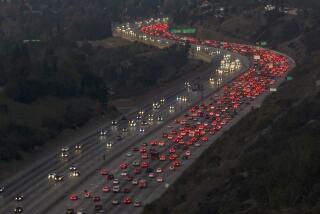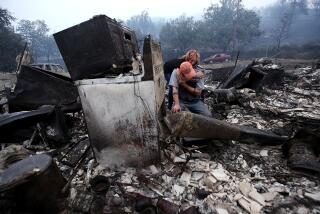Deciphering Insurance-Policy Coverage
A woman recently came into my office in tears. Only moments before, she had driven her car into a parked car in a lot and was afraid she would have to pay for the repairs to the other car. She had hit an expensive car and was sure that it would cost a lot of money; money she didn’t have.
I asked her if she had insurance. “Yes,” she replied, between sobs.
“Then you won’t have to pay for the repairs; your insurance company will,” I explained.
Wrong Impression
No, she said, she had a large deductible, and she just didn’t have the kind of money she knew body shops charged.
Then I explained to her that the deductible was only applicable to her collision insurance, which covers damage to her own car. There was not going to be any deductible on the insurance that would cover damage to the other driver or his car. Assuming she was at fault, her third-party or liability insurance should cover the costs in full.
This woman’s reaction was not uncommon. She was shaken by the accident, concerned that she had damaged someone else’s property and, in her emotional state, she didn’t really understand how her insurance worked.
The California Bar Assn. has tried to help drivers in such tense and emotional situations by publishing a glove compartment guide entitled, “What Should I Do If I Have an Auto Accident?” For your own free copy, send a business-size, self-addressed, stamped envelope to State Bar Pamphlets, 555 Franklin St., San Francisco, Calif. 94102.
One of the first things any driver should understand is their own insurance situation. There are two basic types of automobile insurance: insurance that covers you and your car no matter who is at fault and insurance that covers others if they are injured or their property is damaged as a result of your negligence.
Liability insurance covers both property damage and personal injury to the other person if you are to blame for the accident. Every insurance policy has a maximum limit. If there are damages in excess of the limit, you will be personally responsible for them. In other words, if you cause $750,000 worth of damage, but your policy limit is only $500,000, you will be liable for the remaining $250,000.
That’s an important point. Just because you don’t have insurance or your insurance coverage is not high enough, does not mean that your savings is not at risk.
If you are to blame for an accident, you will be sued individually. Your insurance company will defend you, pay for lawyers and pay any judgment, but only up to the maximum policy limit. Above that, your personal assets will be on the line.
Because California operates a comparative negligence system, the other driver may collect from your insurance company even if you were only partly to blame. But that also means you may recover money to pay for your injuries from the other driver’s insurance company--or the driver directly if he has no insurance--if the other driver was even partly at fault.
If both drivers are covered by insurance, the insurance companies will usually fight it out to determine who was to blame and what each company should pay.
If you are driving a friend’s car and cause an accident, the primary insurance carrier is the one covering your friend, the owner of the vehicle. Your own automobile insurance will come into play only if the damages exceed the limit of your friend’s policy.
Theft and Vandalism
Collision insurance covers damage to your own car even if the accident was your fault. Most policies have deductibles for this type of coverage, which is what confused the woman in my office. Because she had a $500 deductible, she thought she would have to pay for the first $500 of damage to the other car. The deductible only applies to damage to her own car, and the coverage applies no matter who is at fault. Comprehensive insurance covers loss or property damage to your car resulting from such things as theft or vandalism.
Next week: what you should do if someone is injured in a car accident.
More to Read
Sign up for Essential California
The most important California stories and recommendations in your inbox every morning.
You may occasionally receive promotional content from the Los Angeles Times.










